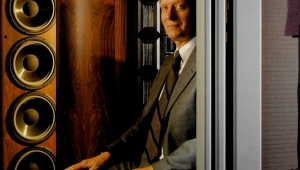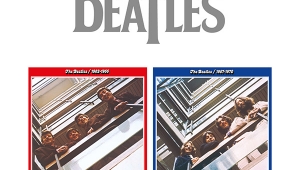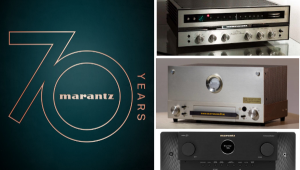| Columns Retired Columns & Blogs |
Finding Music Like the Music That You Like
Let's face it. Despite the vinyl resurgence amongst the young and not so, the days when analogus collecticus could spend hours scouring record bins, holding product in hand, and reading album notes, are mostly behind us. In response to market evolution, at least three competing computer-based technologies have emerged to steer consumers toward music they will likely enjoy. Each uses a different approach, with one claiming "objectivity."
Behold the Beast: According to Tim Westergren, founder of Savage Beast Technologies of Oakland, the company's 30 music professionals cum analysts spend eight hours a day on headphones, identifying up to 400 musical attributes for each selection. These include instrumentation, harmony, melody, rhythm, form, and vocal performance. Twenty sub-attributes are used to describe the voice alone, including vibrato, range, breathiness, and degree of ornamentation.
"I like to think of it as the primary colors," says Westergren. "Any voice can be described by one or a combination of our various attributes, whether it's Tom Waits' or Mariah Carey's."
Westergren claims that if a consumer feeds the company's computer music he or she enjoys, it can identify music with similar attributes.
Savage Beast currently boasts AOL, Best Buy, and Borders as major clients. AOL asserts that its music section traffic has increased by 20% since it began using the program. Best Buy uses it at listening stations in 14 stores; Borders offers it at 12.
Dubbing its database "the Musical Genome Project," Westergren claims superiority over collaborative filtering, which steers music lovers to products most frequently bought by consumers who share their tastes. Instead, Savage Beast may suggest music that may never make the pop charts, including music that was recorded in earlier generations.
"We don't drive people toward a narrow band of popular music," says the 39-year-old classically trained pianist, who spent years playing in rock bands and living out of a van.
"We're trying to find what we call the great long tail, not just the 80% of product that clusters around stuff from the big players. We want to open up that long tail to consumers, connecting people one by one to the huge volume of worthwhile music that sells very little."
Although Savage Beast began with pop music, it is "furiously" building its world music database. Genre jumping will be tackled early in 2006, as will what Westergren terms the "huge animal" otherwise known as classical music.
Sound the Siren: Siren Systems of San Francisco concocted soundflavor.com in response to the downloading phenomenon.
"Playlists are becoming the way listeners get more control over what they listen to," says Siren chief executive Steve Skrzyniarz. "By building playlists on iPods, people decide exactly what they want to hear and when they want to hear it. It's difficult and time-consuming to build a good playlist, and lists gets stale very quickly."
If you supply Soundflavor.com with a song or list of songs, the website's search engine proposes other selections that capture your taste in music. You can then single-click to Amazon, iTunes, or cdbaby, download the tune or buy an entire CD. If you save playlists online, soundflavor.com provides weekly email updates that suggest similar or complementary songs.
Siren's trained team of 25 song-taggers—many of them part-time musicians—analyze a composition's lyrical subjects, themes, instrumentation, and cultural overtones. They even recognize "horizontal density"—the number of musical elements packed into a song.
Soundflavor.com can suggest music by mood, activity, lifestyle, instrumentation, subject matter, or lyrical qualities. You might search for music for a candlelight dinner or for driving fast down the freeway with your top down. How about romantic music from the '70s that features a harp? Soundflavor.com can find it for you—unless it's classical.
"It's not terribly cost effective to cover classical at present," says Skrzyniarz. "Our musical analysts listen to every song, and classical music takes longer."
Soundflavor.com primarily attracts 18–34-year-old males. With 150,000 songs online, the company focuses on rock, folk, and reggae, with an expanding database of jazz, electronica, and world music.
"Our goal is to cover every piece of music in the world from every culture," reports 35-year old Skrzyniarz. "There's an audience for every song; our mission is to find that audience."
The company also facilitates social networking. By signing up for a free account, users can post playlists, upload an optional photo, and communicate with people with similar tastes.
"Hey, I thought I was the only person still into the Beatles. What are you wearing?"
Scoring Hits: Based in Barcelona, Polyphonic HMI developed its Hit Song Science technology to help create Top 40 pop hits. Using an artificial intelligence program to determine "hit potential," the company collaborates with music labels and record producers to decide what songs to include on an album, what to release to radio and in what order, what mix is closest to a "hit cluster," and how to market finished product.
Claiming that HSS enabled it to predict Norah Jones' smashing success long before her Grammy sweep, Polyphonic HMI has snared such clients as Island Def Jam Records, EMI, Tommy Mottola, and a major consultant to Sony Music.
The strength of the company's approach, according to Sacramento-based corporate vice president for North America Tracie Reed, is that it's completely automated.
"There is no one doing headphone listening," she explains. "Our technology is completely objective and very quick. It's also artist, genre, and epic agnostic. We can analyze a piece of music in a third of the time it takes to listen to it, and do so 24 hours a day with as many servers as we can hook up."
"Individuals with all the major corporations are now using our software," says Reed. "It seems only a matter of time before it becomes an industry standard like Dolby or Pro-Tools."
Over the last 12 months, Polyphonic HMI has begun serving radio stations using the "shuffle format." Hit stations (mainly in Europe) wishing to move beyond the same rotation of songs every few hours expand their playlists by enlisting Polyphonic HMI to find songs similar to those their target audience enjoys.
The outfit is just beginning to penetrate the retail market with its Human Music Interface. If fed data on what music a person likes, HMI offers recommendations for other music that person may enjoy. The database will eventually comprise all music commercially available.
Although Polyphonic HMI's approach has been severely criticized for limiting the sound and scope of popular music, Reed insists, "good music does not all sound the same. We help musicians and music directors become greater risk takers, because we give them confidence that they're on the right track."
The right track as dictated by a computer program concocted by humans who nonetheless claim objectivity? Granted, a computer's conclusions are dispassionate. But isn't that precisely the problem with a lot of Top 40 music—it's dispassionately formulaic to the point of sterility?
- Log in or register to post comments




































